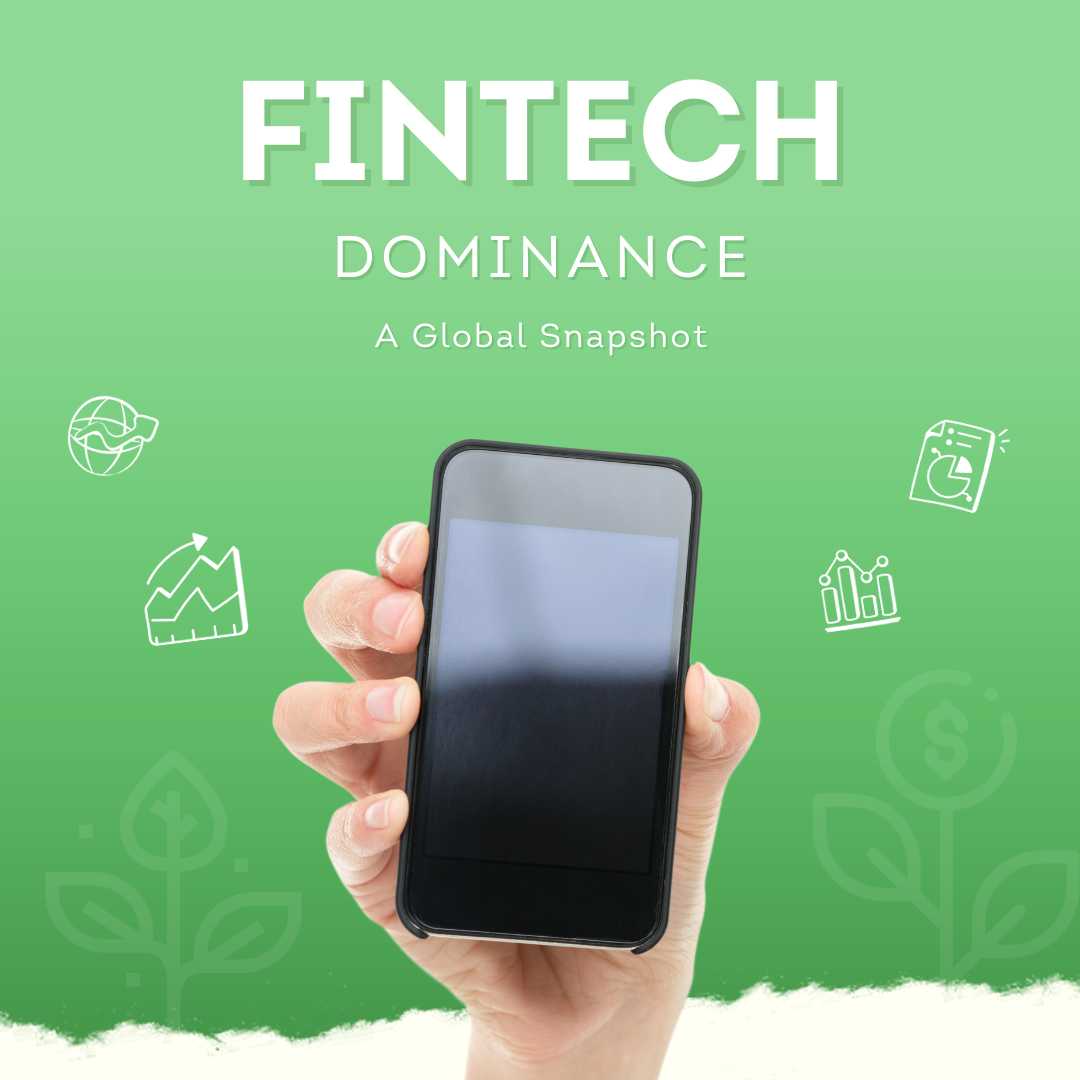Global investors aren’t walking away from fintech. They’re rotating into two big bets: autonomous finance and tokenised cash.
Table of Contents
ToggleThe comeback no one is cheering
If you only skimmed headlines over the past two years, you could be forgiven for thinking fintech was yesterday’s trade. Valuations reset, neobanks went quiet, and “AI everything” stole the attention.
Look at the numbers more closely, and a different story appears.
By late October 2025, global fintech funding had already edged past last year’s total: about $28.7bn in 2025 so far, versus $26.3bn in all of 2024, according to S&P Global Market Intelligence. The third quarter alone saw $8.85bn flow into private fintechs — the first year-on-year improvement in quarterly deal activity since the sector’s downturn began in mid-2022.
Deal counts are still well below 2021’s feverish peak, but investors are writing bigger cheques. There were 19 “mega-rounds” above $100m in Q3 2025, up from 14 a year earlier, even though no single billion-dollar monster round grabbed the spotlight.
KPMG’s Pulse of Fintech report tells a similar story. Across venture, private equity and M&A, fintech deals totalled $44.7bn in the first half of 2025, the lowest six-month haul in five years — but still meaningful in a world where capital has become more selective. Within that total, digital assets and currencies attracted $8.4bn, already close to the entire 2024 tally of $10.7bn. AI-focused fintech drew another $7.2bn, almost matching its full-year 2024 figure of $8.9bn.
In other words, fintech is no longer a broad “category trade”. It has become a barbell: AI agents at one end, stablecoin infrastructure at the other. The more you follow the money, the clearer those two themes become.
Fintech’s two new narratives
S&P puts it bluntly: two narratives now define the next leg of fintech growth — “autonomous finance” and “stablecoin infrastructure”. That framing cuts through a lot of noise.
On the autonomous finance side, the standout Q3 2025 round was Ramp, the US spend-management platform. After raising $200m in the second quarter, it returned just 45 days later for another $500m led by ICONIQ, lifting its valuation from $16bn to $22.5bn. The draw for investors was not another card product, but the promise of AI agents that automatically optimise corporate spend, payments and treasury.
Further down the stack, early-stage funding is flowing into specialist “agentic” platforms. Deals highlighted by S&P include Circuit and Chisel, an “agentic commerce” platform that raised $19.2m, Kira Financial AI, blending domain-specific agents with stablecoins to launch embedded financial products, and Neurofin AI Technologies in India, which builds modular agents to automate workflows for banks and insurers.
On the stablecoin side, investors are backing both issuers and infrastructure:
- Rain, a stablecoin-focused issuer and card platform, raised a $58m Series B just five months after its Series A, to meet demand from partners that want to settle on-chain.
- Brale, which helps institutions issue their own stablecoins, secured $30m, while Stablecore raised $20m to let banks and credit unions roll out stablecoin products under their own brands.
Seen together, these rounds tell you what public markets and late-stage VCs think the next decade of fintech looks like: software that can move money without human intervention, running on a new layer of tokenised dollars.
Why AI agents suddenly look like a “real” business
The idea that algorithms could make financial decisions on a customer’s behalf is not new. Robo-advisers tried it in wealth management; personal finance apps promised automated budgeting. The difference in 2025 is that large language models and agent frameworks can now act across multiple systems at once — email, ERP, payments, treasury dashboards — and learn from the outcomes.
For corporate finance teams, that sounds less like a gadget and more like headcount.
Ramp’s pitch is emblematic: AI agents scan invoices, contracts and card transactions; flag unusual spend; re-route payments across cards, accounts and payment methods; and use policy prompts rather than manual approvals. Investors are effectively making a bet that “finance as code” will become the default inside growth companies, in the same way DevOps changed software deployment.
At the early stage, the same idea is being pushed into niche verticals. Neurofin’s agents tackle risk and operations for emerging-market lenders; Kira’s blend of agents and stablecoins promises embedded credit and savings accounts inside other platforms.
Global venture data gives this a macro backdrop. Overall VC funding reached $97bn in Q3 2025, up 38% year on year, with AI capturing almost half (around 46%) of that total. Fintech is riding that AI wave, rather than competing with it.
The shift is subtle but important. The most interesting fintech companies of 2025 are not trying to become banks. They are trying to become the software layer that tells banks, cards and payment rails what to do.
Stablecoins grow up — quietly
If AI agents are the brains of this new stack, stablecoins are the balance sheet.
By mid-2025, the total stablecoin market cap sat around $250–255bn, up roughly 22% year-on-year, with active wallets growing by more than 50%. A separate analysis by DeFi data providers puts the figure slightly higher — around $300bn by late 2025. The exact number moves with prices and redemptions, but the trend is clear: tokenised dollars are no longer a niche.
The velocity of those tokens is even more striking. McKinsey estimates that dollar-pegged stablecoins now process $20–30bn of “real” on-chain payments per day, and that annual transaction volumes have surpassed $27tn, even though that is still less than 1% of global money flows.
TRM Labs, analysing blockchain data for the first half of 2025, finds that:
- Stablecoins now account for around 30% of all crypto transaction volume.
- Between January and July 2025, they recorded more than $4tn in volume, an 83% increase on the same period in 2024.
- More than 90% of fiat-backed stablecoins are pegged to the US dollar, with USDT and USDC making up about 93% of market capitalisation.
A separate study of chain-level data estimates that on-chain stablecoin volume in the first half of 2025 alone exceeded $8.9tn.
The message is simple: stablecoins are becoming the default settlement asset for the crypto economy, and an increasingly important rail for real-world payments, remittances and trade.
Investors have noticed. KPMG’s H1 2025 report shows digital assets and currencies — with stablecoins at the centre — as the single largest fintech segment by capital deployed, at $8.4bn. That is a bigger share of the pie than payments or lending.

Regulation flips from headwind to tailwind
For most of the past decade, the main risk in stablecoins was regulatory uncertainty. That is changing, fast.
- In Europe, the Markets in Crypto-Assets Regulation (MiCA) is now fully in force. Stablecoin-like “e-money tokens” and asset-referenced tokens face clear rules on licensing, reserve composition, disclosure and supervision.
- In the United States, Congress passed the GENIUS Act in July 2025, creating the country’s first comprehensive framework for payment stablecoins, including requirements on reserves, supervision and risk management.
- An EY comparison of global regimes notes that the EU, UAE (via VARA and the Payment Token Services Regulation), Japan and Singapore are now among the most advanced jurisdictions in setting out stablecoin rules.
Central banks and regulators are not exactly cheerleading, but they are moving from “if” to “how”. A BIS brief published in 2025 frames MiCA and the GENIUS Act as attempts to bound the risks of yield-bearing stablecoins, particularly around reserve lending and staking.
Clarity has consequences. KPMG points out that stablecoins are gaining steam precisely as those frameworks land, and flags the passage of the GENIUS Act as a likely driver of renewed investor interest globally.
In parallel, the political mood has shifted. TRM notes that US crypto transaction volume jumped about 50% between January and July 2025 year-on-year, helped by a more supportive administration and the perception that the US now wants to be “the crypto capital of the world”.
For founders, this combination — legal perimeter + political tailwind — is arguably more important than any short-term price action.
The new competitive frontier: plumbing, not just products
When you put the AI and stablecoin strands together, the pattern is less about speculation and more about infrastructure.
On the stablecoin side, McKinsey estimates that total issued value has doubled to about $250bn in the past 18 months, and could reach more than $400bn by year-end and $2tn by 2028. J.P. Morgan’s research puts the medium-term range for the market around $500–750bn, depending on adoption.
At the same time, fintech investors are backing:
- Issuers (Rain, Brale, Stablecore) that give enterprises and banks white-label access to stablecoin products.
- Agentic platforms that treat stablecoins as just another balance inside their system, to be routed automatically between wallets, exchanges, money-market funds and bank accounts.
KPMG’s digital-asset analysis notes that stablecoin usage is spreading beyond decentralised finance into remittances, trade finance and other “real-world” applications, as corporates experiment with tokenised cash for treasury and settlement.
The battle is increasingly about who controls the orchestration layer:
- At the consumer edge, wallets and neobanks that can move funds between cards, bank deposits, ETFs and stablecoins without the user thinking about the underlying rails.
- In the middle, platforms that connect those wallets to payment schemes, card networks, FX desks, money-market funds and on-chain liquidity pools.
- At the base, issuers and custodians that actually hold reserves and issue tokens under tightening regulation.
Investors are voting with their term sheets for the middle and bottom of that stack, not the top.
Risk has not gone away — it has moved
The fact that stablecoins are becoming more regulated does not make them risk-free.
In November 2025, S&P Global downgraded Tether’s USDT — by far the largest stablecoin — to the weakest grade on its five-point scale, citing a growing share of “high-risk” assets such as bitcoin, gold, corporate bonds and secured loans in its reserves, as well as limited transparency.
The European Central Bank, in its latest Financial Stability Review, warns that even though stablecoins’ total valuation is still modest (around $280bn at the time of its analysis), they already underpin roughly 80% of trades on centralised crypto exchanges. A run on a major issuer, and the resulting fire-sale of the US Treasuries and other assets they hold, could have real consequences for funding markets and for euro-area banks if deposits migrate at scale.
TRM’s work on illicit finance adds another nuance. It estimates that 99% of stablecoin volume is licit, but notes that in early 2025 stablecoins still accounted for about 60% of illicit crypto activity, before sanctions-related flows began to move back into more obscure tokens.
The upshot: stablecoins are becoming systemically relevant before the plumbing has fully matured. Regulation is catching up, but so is market size.
On the AI side, the risks are different but no less real:
- Agentic systems can amplify bad decisions — mis-routed payments, poorly calibrated lending models, mis-priced risk — at machine speed.
- Data governance and explainability become central to regulatory comfort; supervisors are unlikely to tolerate “black box” agents making credit or compliance calls without clear audit trails.
Fintech investors, chastened by the last boom-and-bust, appear more aware of these issues. Funding terms are tougher; governance expectations higher. But if your product is literally moving client money 24/7, the margin for error is shrinking, not expanding.
What this means for incumbents and founders
For incumbent banks, payment processors and asset managers, the message from 2025’s deal flow is uncomfortable: the future profit pools in fintech may sit in layers they do not fully control.
Three shifts stand out:
- From user interfaces to orchestration layers
The “new” fintech winners are less likely to be consumer-facing apps and more likely to be middleware: APIs, data platforms and agent frameworks that sit behind the scenes but dictate how money moves. - From balance-sheet risk to fee-based rails
Stablecoin issuers, tokenised money-market funds and settlement platforms earn fees without traditional credit risk — but they also absorb some of the economics that used to sit in deposits, FX margins and card interchange. - From regulatory arbitrage to regulatory leverage
The jurisdictions that moved first on MiCA-style rules, stablecoin licensing and bank participation in digital assets are now seeing more capital and experimentation. Those that remain ambiguous risk watching their financial centres lose relevance.
For founders, there is an equally clear set of signals:
- Agentic AI is real, but infrastructure-heavy. The best-funded companies are those that can plug into ERP systems, bank APIs, card programmes and liquidity venues — not just call a language model.
- Stablecoins are here to stay, but the bar is rising. Attestation, reserve quality and regulatory licences are quickly becoming table stakes. Business models built on short-term yield or opaque collateral look increasingly fragile.
- Cross-border is the prize. Whether for trade finance, remittances or treasury, the most defensible use-cases combine tokenised dollars, AI-driven routing and hard-to-replicate compliance and FX capabilities.
The next three to five years: scenarios, not certainties
Projecting forward is always risky, but the current data supports a few plausible paths.
- Base case: tokenised cash as a serious side-rail
If McKinsey’s and J.P. Morgan’s forecasts prove roughly correct, stablecoin circulation in the second half of this decade could sit somewhere between $500bn and $1tn, with daily volumes in the hundreds of billions as more use-cases — remittances, B2B payments, capital-market settlement — migrate on-chain. In this world, stablecoins coexist with traditional rails, but capture many of the highest-friction flows. - Upside case: agents + stablecoins become the default stack
If agentic systems keep improving and regulators remain broadly supportive, large corporates could begin to delegate routine finance tasks to AI agents that operate natively in stablecoins and tokenised deposits. Human teams would focus on oversight and exception handling. In this scenario, the marginal dollar of new fintech value sits in orchestration platforms and agent frameworks, not consumer apps. - Downside case: a credibility shock
A major de-pegging, cyber incident or compliance scandal — whether in a stablecoin reserve or an AI-driven finance platform — could trigger a regulatory clampdown or loss of market confidence. The ECB’s concerns about runs, and S&P’s downgrade of Tether’s reserves, show that regulators and rating agencies are already thinking along these lines.
In all three scenarios, however, the direction of travel inside fintech funding is unlikely to reverse quickly. Digital assets and currencies, and AI-first fintech, already account for a disproportionately large share of capital deployed; they are not side-shows any more.
Signal amid the noise
It is tempting to read the resurgence in fintech funding as a rerun of 2021 — the same capital chasing the same consumer stories. The evidence suggests something more interesting.
The AI agent and the stablecoin are not just buzzwords. They are two sides of a new architecture: one decides what to do; the other moves the money. The companies attracting serious capital in 2025 are those that sit where these layers meet — routing flows, enforcing policy, and turning previously manual work into code.
For founders, investors and incumbents, the challenge is the same: stop asking whether fintech is “back”, and start asking how comfortable you are letting software move value on your behalf, 24 hours a day, over rails that did not exist a decade ago.
Because that, increasingly, is where the fintech money is actually going.












